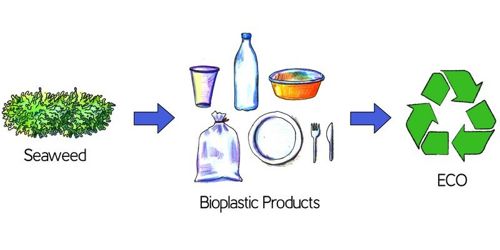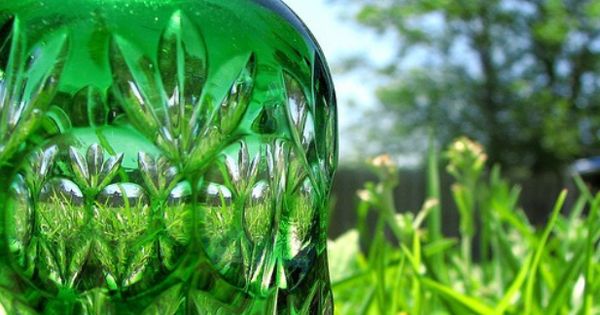Plastics produced from crops such as corn or sugar cane instead of fossil fuels are commonly considered being renewable. One explanation is that plants bind CO2, which compensates for carbon emitted into the environment as plastics are disposed of. There is, however, a catch: with growing demand for raw materials for bioplastic processing, the areas under cultivation might not be adequate. As a result, natural woodland is frequently turned into farmland, and trees are burned down. This, in fact, releases a substantial volume of CO2.
Researchers at the University of Bonn (Germany) have now confirmed the assumption that more bioplastics do not actually contribute to more climate security. They find that the survival of plant-based bioplastics depends primarily on the country of origin, its trading ties and the raw material is produced. The research was published in the journal “Resources, Conservation & Recycling.”
Scientists found that the sustainability of plant-based bioplastics depends largely on the country of origin, its trade relationships, and the raw material processed.
As in previous analyzes, scientists have used a national, scalable, and versatile economic model built at the University of Bonn to simulate the effect of the growing availability of bioplastics. The model is based on a database of the planet (Global Trade Analysis Project). In their current analysis, researchers have updated the original model by disaggregating both traditional plastics and bioplastics, as well as additional crops such as maize and cassava.
“This is crucial to better represent the bioplastics supply chain in major producing regions and assess their environmental impacts from a life cycle perspective,” says agricultural engineer Dr. Neus Escobar, who has completed a study at the Institute for Food and Resource Economics (ILR) and the Center for Growth Science (ZEF) at the University of Bonn and is now based at the Internatio (Austria).
In the present research, Dr. Wolfgang Britz and her colleague considered the depletion of the natural vegetation on a global scale. They made assessments of readily available land to be transformed into beneficial uses at the regional level and related model parameters. In their previous papers, Bonn scientists have already broken down the production of traditional plastics and bioplastics in Brazil, China, the EU, and the US—the countries leading the way in the production of bioplastics. Thailand, which is home to carbon-rich trees, was also included in their current report.

Experts expect the Asian nation to become the world’s top manufacturer of biodegradable and biobased plastics in the immediate future. “All these changes in the model are necessary to estimate global spillovers of policies or technologies,” says Dr. Wolfgang Britz, who collaborated with his team to extend the model in order to create sustainability metrics taking into account changes in global land use.
Factors such as country of origin and raw materials are decisive
The researchers simulated a total of 180 scenarios (36 scenarios per region) that varied based on the degree of market penetration of bioplastics and other model parameters for an economic response. “We found that the carbon footprints of commercially available bioplastics are much larger than the values previously estimated in scientific literature and policy reports,” says Neus Escobar.
Reason: CO2 emissions resulting from improvements in land use outweigh the long-term savings in greenhouse gas emissions resulting from the replacement of carbon raw materials. With one exception, bioplastics manufactured in Thailand save on average two kilograms of CO2 per ton. This is primarily attributed to the comparatively small rise in the output of bioplastics replicated, which translates into modest improvements in food prices and related ground cover shifts. However, the rising production of cassava and sugarcane bioplastics in Thailand in order to keep up with other regions will result in the loss of carbon-rich habitats within the area.
None of the regions is clearly better positioned than another
Overall estimates reveal that neither of the regions is clearly better placed than another to become a center for sustainable development of bioplastics. The highest land footprint is calculated for Chinese bioplastics, while the European Union has the largest average carbon footprint: bioplastics produced in the EU take an average of 232.5 years to reduce global CO2 emissions. Bioplastics production in the U.S. is responsible for the highest land and pollution spillovers, which means that production produces more agricultural land growth, erosion, and carbon emissions in the rest of the world than in the region.
“Our study shows that an expansion in bio-based production should be carefully assessed on a region-by-region case in order to understand potentially sustainability risks and trade-offs,” says Neus Escobar. The authors stress that the suggested indicators will be used in the future to track the long-term viability of bio-economic interventions internationally. Metrics may help, among other things, to determine where complementary policies are needed—for example, to deter deforestation.
Working on future-relevant research topics
The thesis is thematically incorporated into the Transdisciplinary Research Area (TRA) “Innovation and Technology for Sustainable Futures” at the University of Bonn. In six separate TRAs, scientists from a wide variety of faculties and backgrounds have come together to collaborate on future-relevant research topics. During the study, Neus Escobar was a member of the Transdisciplinary Research Area, and Wolfgang Britz is a member of the PhenoRob Cluster of Excellence at the University of Bonn.














